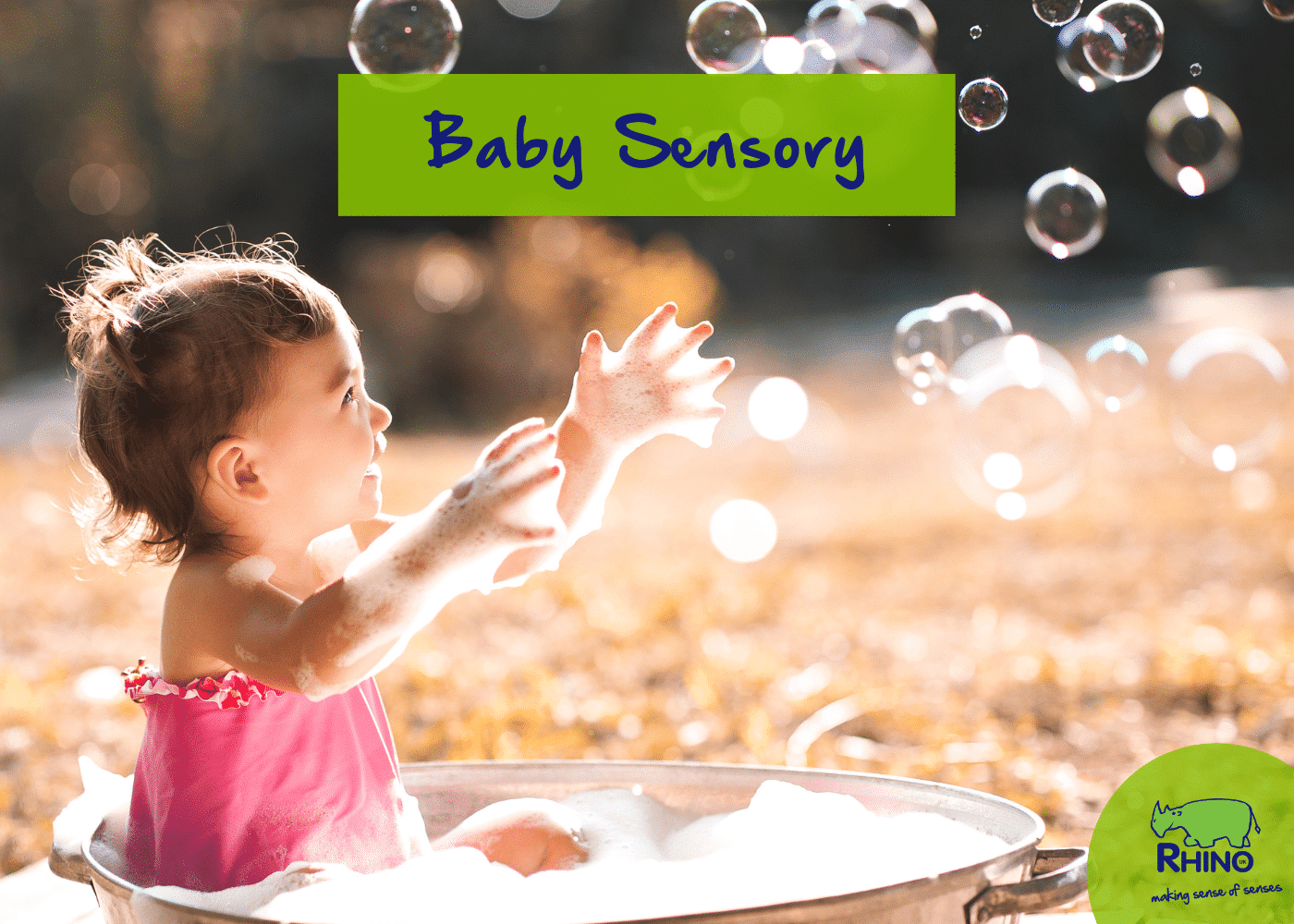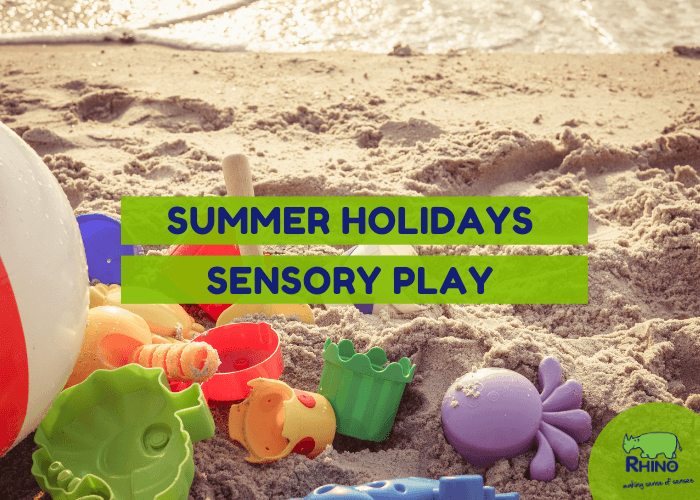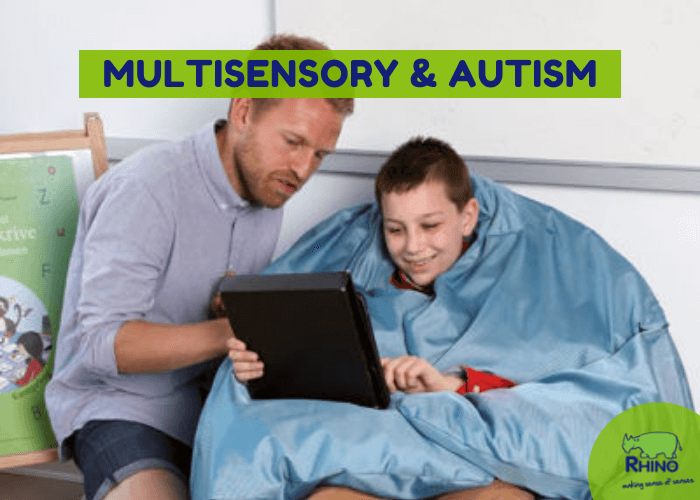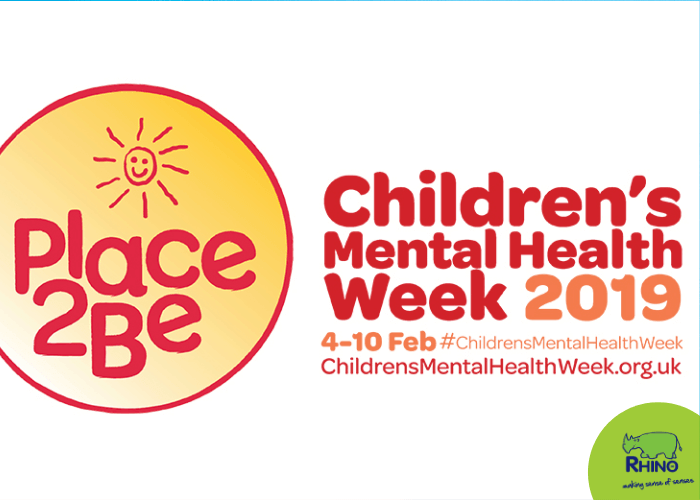What is Baby Sensory?
Every day babies are born into a world of stimulating sounds, colours, tastes, smells and textures – a world away from the controlled and protected environment inside mum’s tummy.
Unsurprisingly, babies can quickly feel overwhelmed by all the sensory inputs they’re suddenly exposed to, resulting in a sensory overload: a moment where your body and mind struggle to keep up with the amount of sensory inputs it’s trying to compute, leaving you feeling tired, emotional, or wanting to escape to a quieter less stimulating, comfortable space.
Did you know that sensory overloads could be a reason why a baby cries a lot during their first couple of months, as it takes time for them to adjust to their new sensory environments?
Because of this, it is a great idea for parents to try to understand their child’s sensory needs as they start their sensory journey. You’ll be able to learn more about yourself, your baby, and your relationship whilst creating a perfect sensory environment to learn, play and develop.
Discovering Sensory Preferences
It takes a couple of months for a baby to start to properly process the sensory environments they occupy. Their senses will act as a natural guide as they see, touch, smell, taste and listen to the world around them.
You might notice them starting to smile when they hear your voice or see your face, that they only fall asleep when wrapped snugly in a fluffy blanket, or that softly rocking them when they’re feeling upset can help calm them down.
You could also notice them start to get upset in a bright room, that they start crying after hearing a loud noise, or that they struggle when you try to bath them.
These are the beginnings of their sensory preferences.
Sensory preferences can show immediately, e.g. loud noise = crying, or they could take more time to show, e.g. disliking the smells of certain environments. There isn’t a rush to discover them all straight away, but becoming more aware of your baby’s sensory preferences can be a great way to regulate their mood, aid their development, and deepen the connection the two of you share.
Sensory Sensitive Children & Sensory Processing Disorder
Each child will have their own sensory preferences. But if over time you find that it takes a lot of sensory stimulation for your child to react or if it only takes the slightest stimulation to make them uncomfortable, and if it’s causing real issues with their personal and social development, then it could be worth going to see your doctor, as your child could have a sensory processing disorder.
Benefits of Sensory for Babies
- Aid cognitive development: The more we understand our senses, the better we can understand the world around us. Making links between sights and smells or sounds and colour are great first steps in a child’s development.
- Social Skills: Before we learn to talk, we communicate in physical ways with gestures and movement. The more we understand each other and our bodies, what we like and what we don’t like, the better we can connect to one another.
- Motor Skills: Sensory activities also help us develop our hidden senses, like our Vestibular and Proprioceptive Senses – helping your baby become more confident and comfortable moving and exploring.
- Connect with your child: Babies can’t tell you what’s wrong, but they can tell you when something is wrong. If they’re not hunger or time for a nappy change, their senses might be under or over-stimulated. Becoming more aware of your baby’s sensory preferences could help reduce meltdowns too.
Sensory Activities For Babies
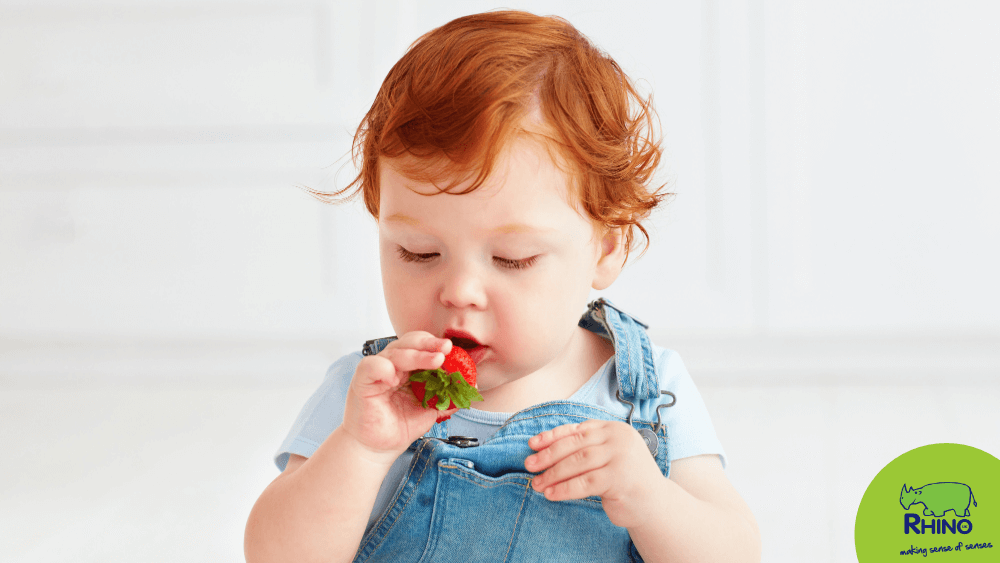
Taste
Think of your favourite meal and imagine how amazing it felt tasting it for the first time – babies have the chance to experience this each and every day as they discover new foods, fruits and vegetables. Developing a baby’s sense of taste is a great way for them to enjoy a balanced diet as they get older, as they’ll have a wide range of foods that they’re comfortable eating.
Remember that it’s not just the taste of food, but the texture too. If you find that they struggle with lumpier, more textured foods, see if they’re more responsive to smoother, pureed foods.
Introducing your baby to new foods and textures can also boost their mood, develop their motor skills, and give them the energy they need to explore each new challenge that comes their way.
Taste Sensory Activity
A Healthy Rainbow: create a rainbow of fruit and veg and get your baby to try the different tastes and textures. Do they prefer softer fruits or crunchier vegetables?
Sensory Toys for Babies: Taste
Unicorn Animal Teether, Llama Animal Teether.

Touch
Touch is an important sense for babies. They explore the world with their hands, inquisitively grabbing for things in an attempt to learn more about them. But did you know that your child could be sensitive to certain textures?
They might prefer to wear as little clothes as possible to let their skin breathe, or they could feel the exact opposite and want to be wrapped warmly in a fluffy onesie all day.
It’s okay to be averse to some textures, but it can also be a good idea to help your baby become more comfortable with the textures they don’t like so they don’t avoid them for the rest of their life. A great way to do this is to slowly introduce them to different textures through sensory play, especially with a sensory tub!
Touch Sensory Activity
Make your own Sensory Tub: Create a sensory tub for your child to explore their sense of touch, fill it with dry or wet elements, or create a themed tub. Follow our Sensory Tub Guide to find out how to make your own.
Sensory Toys for Babies: Touch
Wonder Sensory Blocks, Soft Rubber Farm Set, Sensory Snap Beads.
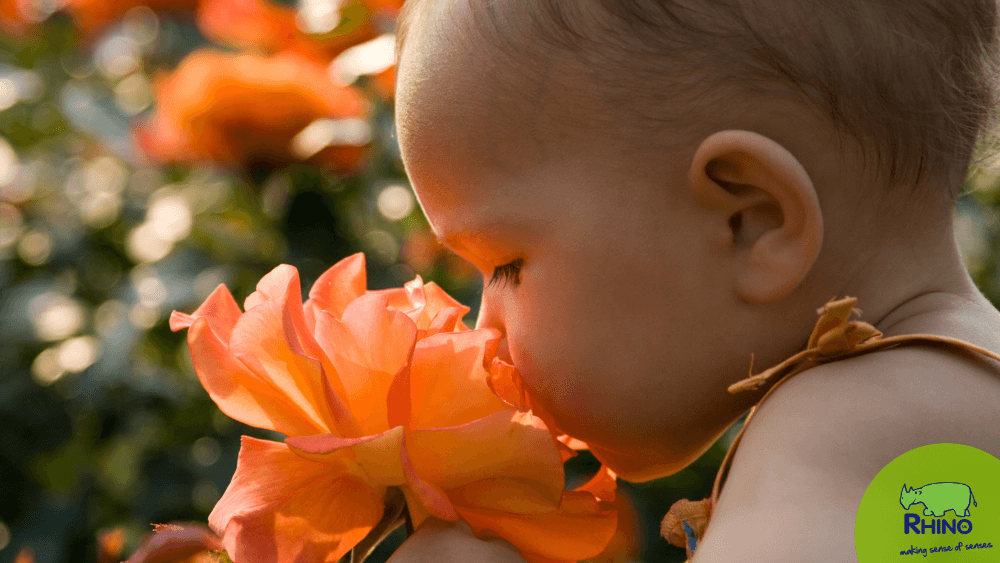
Smell
Smell is one of a baby’s strongest senses. As their other senses develop, a baby will use their sense of smell to recognise people and places 1. Therefore, it’s a good idea for you to think about the smells in your home and consider how your baby may react to them.
Stick with a similar fabric conditioner so your baby can make a link between you and the clothes/materials around them. Use a lavender diffuser in their bedroom so they can connect its soothing smell to sleep and relaxation. Take them outside to discover the natural smells of the outdoors so they can connect their senses to nature!
Smell Sensory Activity
Smell Pots: Are perfect for inquisitive minds and noses; the plastic pots have holes in their lids, encouraging the exploration of our sense of smell. See which ones your baby likes or which ones they don’t like, introduce them to new smells and see how they react!
Sensory Toys for Babies: Smell
Smell Pots, Aroma Cubes (n.b. remember to use these products under close supervision).
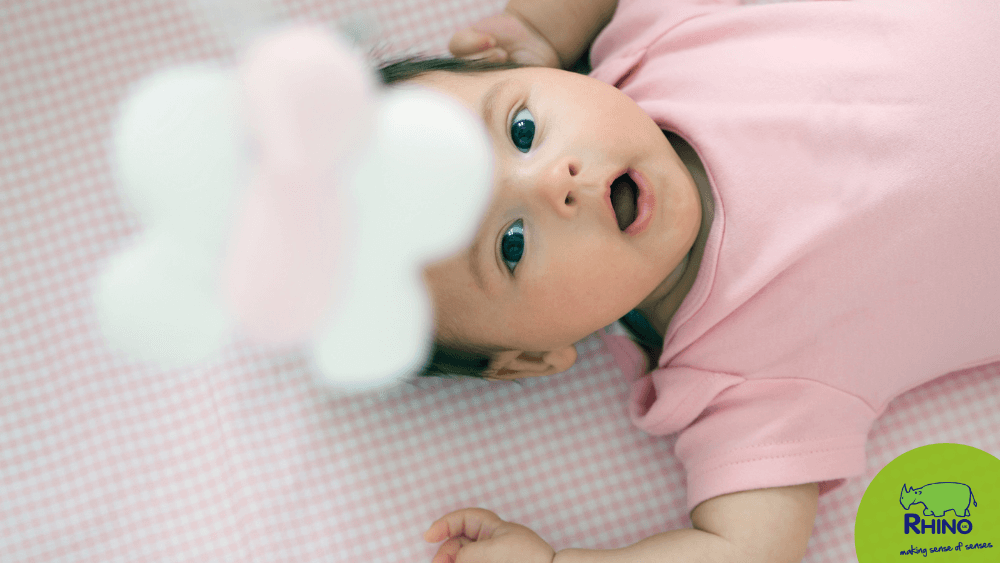
Sight
We might consider sight one of our most important senses, but it’s actually one of the last senses that a baby will properly develop. Because of this, it’s a great idea to introduce your child to simple yet bold visual stimulations with bright colours, lights and reflections.
Black, white and red provide a great visual contrast and are perfect colours to stimulate a babies sense of vision. It’s one of the reasons why baby sensory products are designed in these simple colours.
Think about the brightness levels in spaces where your baby goes; try to incorporate as much natural light as possible. Let your child experiment with mirrors to learn more about reflections. We’ve found that a sensory mobile is a great visual gadget to distract and stimulate babies.
Visual Sensory Activity
Mood Light: Experiment with different colours, roll through the colours of the rainbow and find which colour your baby likes the most. The soft, colourful lighting is great for relaxing and distraction too. Our mood blocks are great for this sort of activity.
Sensory Toys for Babies: Visual
Mirror Buttons, Infant Mobile, Double Mirror Mat.

Sounds
Sounds carry meaning, meanings that are learnt and experienced over time. For a baby, sounds are interesting empty sensory vehicles for them to discover and fill with their own meaning. Whether that’s the comforting tone of your voice, the sound of their name being repeated, or the soft song of a bird outside. Nurturing a baby’s sense of sound is important for their social, communicative and mental development.
Sound Sensory Activity
Baby and Me Playlist: A recent research report found that a baby will have a preference for the music that it will have heard when it was in the womb. So to comfort and nurture your child’s sense of sound, why don’t you create a playlist of special songs that you can share when you are together?
Sensory Toys for Babies: Sounds
Crawl & Learn Bright Light Ball, Ocean Drum, Senso Rainbow Ball.
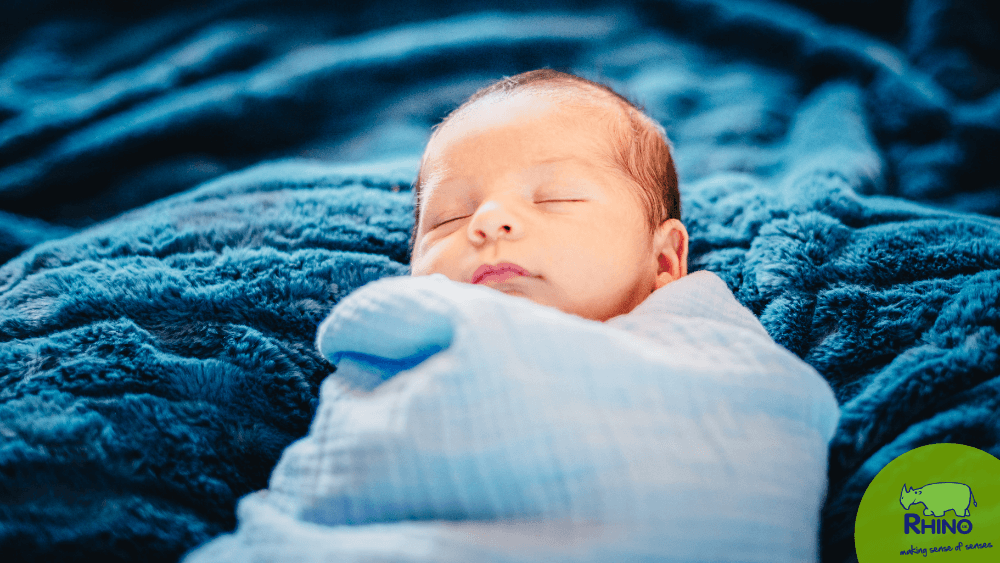
Proprioceptive
Our proprioceptive sense is a ‘hidden sense’, one that refers to our body in a space, how comfortable we feel there. The best way to describe it is the comfortable feeling you get when you’re wrapped in your duvet in bed or how calm you feel after you’ve slipped into a warm bubble bath – situations when your full body is stimulated, typically in warm comfort.
We’ll normally stimulate our proprioceptive senses without really realising it, like swaddling your baby in a soft blanket to recreates the warm comfort of being held in your arms.
Stimulating and developing your baby’s proprioceptive senses can help them feel calmer and develop their confidence.
Proprioceptive Sensory Activity
Sensory Blanket: Create a special sensory blanket for proprioceptive stimulation. This can be any normal blanket, but we’re challenging you to personalise it, whether that’s stitching patches onto it, writing the lyrics to your favourite lullaby, or creating a special name tag for the blanket. Make it special and make it memorable.
Sensory Toys for Babies: Proprioceptive
Weighted Cat, Small Weighted Lap Pad.
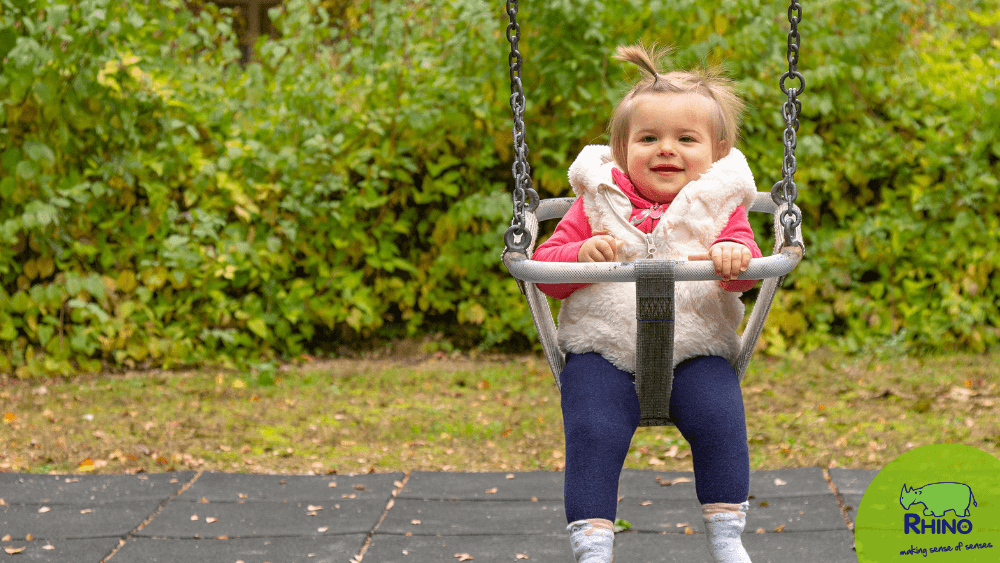
Vestibular
The vestibular sense is liked to our balance and movement, which can have a surprising effect on our mood and development.
You might find that your baby calms down as you slowly rock them in your arms, as the soft vestibular stimulation helps them to relax. Or you could see them light up in excitement as they bounce around in a baby bouncer. The more comfortable they feel with movement, the more confident they’ll feel in themselves.
Vestibular Sensory Activity
Swing, swing: Find a suitable swing for your baby and see how they react to the soft swinging motion. Do you need to push slower or faster? And how long will it take them to figure out how to make the seat swing on its own using their bodies?
Sensory Toys for Babies: Vestibular
Rocking Bowl, Bouncing Chair, Cocoon Swing.
Baby Sensory at Home
Before you get started on your baby’s sensory journey, you should remember to always experiment cautiously and carefully. Remember that every day is an opportunity to learn more about your senses and yourself. That sensory preferences might change over time, and that it could take a while for your baby to grow into their sensory being – it’s up to you to nurture that natural process. 😊
If you’d like any more sensory advice regarding your child, then don’t hesitate to get in touch with a member of our sensory team, who’ll be more than happy to help out.
